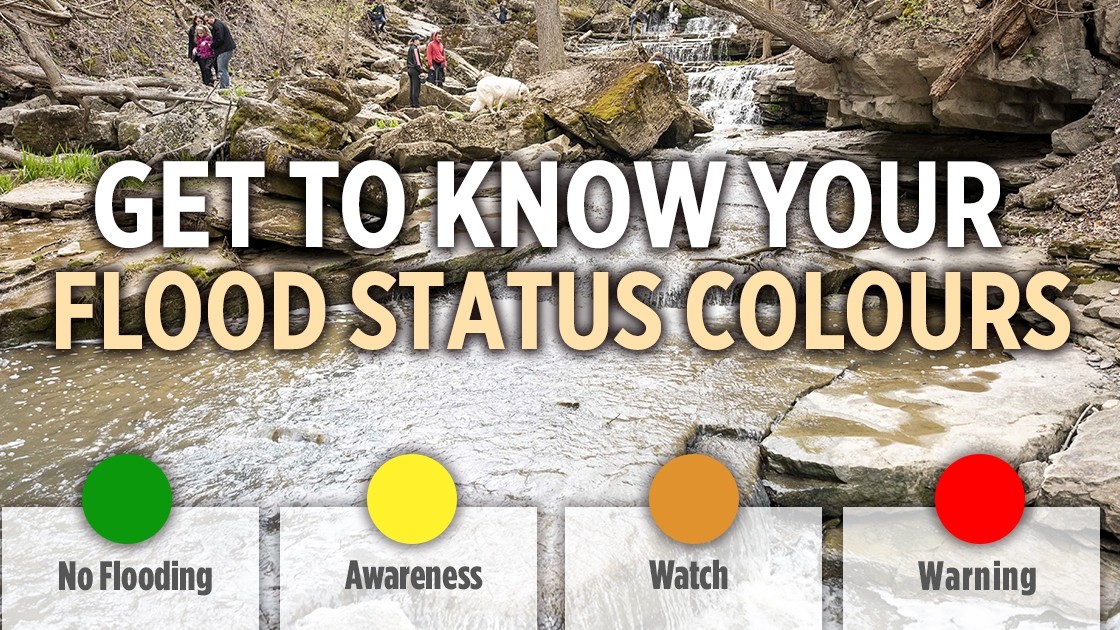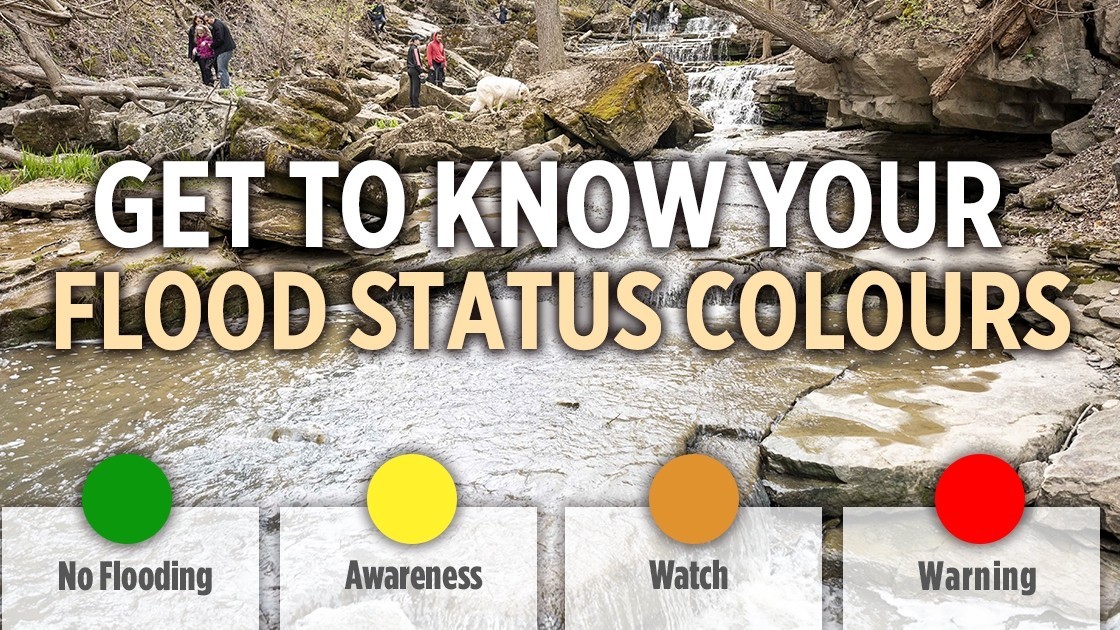Spring brings the promise of warmer temperatures, longer sunny days, and limitless recreational opportunities, but it also means melting snow and heavy rain can increase the risk of flooding.
“As these warmer temperatures begin to set in, our team continues to manage the impacts of spring freshet – the annual spring runoff that occurs from melted snow and rain,” says Ryan Kitchen, Water Resources Technician at Niagara Peninsula Conservation Authority (NPCA). “Protecting residents and their property from flooding and erosion is one of our most important responsibilities, and it includes ensuring the watershed community is well-informed and aware of flood risks.”
Flood prediction is complex as there is a high degree of dependence on day-to-day weather forecasts and conditions, and the speed and consistency at which temperatures transition. To assist with its prediction, the NPCA conducts snow surveys twice a month from November to May, where snow at seven snow courses across the watershed is measured and weighed. This data is collected and analyzed to develop a deeper understanding of the fluxes and behaviour of the systems and potential flooding.
The NPCA also monitors stream flow, rainfall, and other meteorological information at locations across the watershed, through a network of stations called a Hydrometric Network. This specialized equipment measures, records, stores, and transmits data such as water levels, precipitation, and other parameters, and allows for the sharing of information in real time, which is crucial when communicating a flood warning with the public.
When flooding is possible or about to occur, the NPCA will issue flood advisories to municipal emergency management officials, the media, and community at large. These follow Provincial Flood Messaging Standards using a colour coding system based on severity and ranging from Green, Yellow, Orange, and Red.
- Green: no flooding conditions exist.
- Yellow: Be informed and aware.
- Water Safety Statements- high flows, unsafe banks, melting ice or other factors could be dangerous for recreational users such as anglers, hikers, canoeists, however no flooding is expected.
- Flood Outlook Statement- an early notice of the potential for flooding based on weather forecasts calling for heavy rain, snow melt, or other conditions that could lead to high runoff, cause ice jams, and lakeshore flooding or erosion.
- Orange: Flood Watch. Flooding is possible in specific watercourses or municipalities. Municipalities, emergency services and individual landowners in flood-prone areas should prepare.
- Red: Flood Warning. Flooding is imminent or already occurring in specific watercourses or municipalities. Municipalities and individuals should take action to deal with flood conditions. This may include road closures and evacuations.
To keep the community informed, advisories are shared across a variety of mediums including NPCA’s website, social media channels, and members of the public can even receive this information directly to their personal devices by downloading the free Alertable App to stay in the know. The flood advisories indicate when and where a flooding event is predicted to occur, and provide advice to the puiblic on recommended courses of action.
Learn more about NPCA’s Flood Advisories at www.npca.ca/flood-status. For more information on the Niagara Peninsula Conservation Authority, visit www.npca.ca. Follow Facebook and Twitter for more updates.
-30-
About NPCA:
The Niagara Peninsula Conservation Authority (NPCA) is a community-based natural resource management agency that works to protect, enhance, and sustain healthy watersheds. With more than 60 years of experience, the NPCA offers watershed programs and services that focus on flood and hazard management, source water protection, species protection, ecosystem restoration, community stewardship, and land management.
The NPCA is one of 36 Conservation Authorities in the Province of Ontario and manages 41 Conservation Areas within the Niagara Peninsula watershed held in public trust for recreation, heritage preservation, conservation, and education. These natural and shared greenspaces marry nature, culture, and adventure to create limitless opportunities for discovery.
Questions related to the above release should be directed to:
Erika Navarro, Communications Specialist
Mobile: 905-650-4027
enavarro@npca.ca

